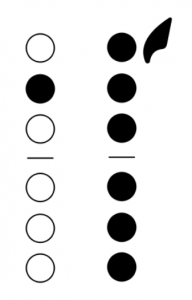I seem to have trouble with a D when I transition to the octave key.
All other notes are fine. I can play the D by itself. And its from C to D like in a scale run.
I’m pretty sure the problem is me.
-Dustin
My response:
This is a great question! It allows us to look at why certain transitions between notes on the saxophone are ‘harder’ or give us trouble.
And yes, the issue is with you and your fingers.
Let’s look at how your fingers move from C to D.
So the middle finger on the left hand stays pressed and six other keys, involving six other fingers, are then pressed. One of those keys is the octave key, which ends up being somewhat significant.
Transitioning from A to B means pressing a single key. Little room for error.
When you press six keys, you need to press them all at the same time. If you rush or drag with any of the movements, you can cause problems.
Part of what you want to do is figure out which of your fingers are early and which are late. If you’re having trouble going between C and D, it almost definitely means that at least one of your fingers is early or late. Slowing down as you play this will help you figure it out.
If you are interested in learning more about technique on saxophone and/or have a question, use this form.




I’ve found it can be helpful to “play” the sax without blowing at all, so you’re just concentrating on the fingering without worrying about tone etc. You can also hear the keys hitting and work out which are not in unison.
Thanks Andrew, that can be good. When you’re playing notes, you will more easily know if there is a problem (not necessarily what exactly), but it adds another element to think about.